Descending 230 feet, the Frecciarosa carried us through the Po Valley. Silently and smoothly, we zipped through dozens of well-engineered tunnels in the Apennines Mountains and the slopes of its subchain: the Tuscan-Emilian. Our train crossed the Continental Divide, where water either flows to the Mediterranean Sea or the Adriatic Sea. We segued from the Lombardia Region into the Toscano (Tuscany) Region—which is famed for food! We were destined to reach its capital: Firenze (Florence), which was the cradle of the Renaissance! The rolling landscape of the Tuscan hillsides was beautiful.
Tuscany has 10 provinces. One has an unusual name: The Metropolitan City of Florence. That's where we went.
On maps, that province is simply labeled as Florence (Firenze).
It includes the actual City of Florence, which is the province's capital. The City of Florence is also the regional capital of Tuscany. As the regional and provincial capital, the city has a lot of prominence. This is its emblem, which I will describe later.
It sits nearly in the middle of the country, between the Adriatic and Tyrrhenian Seas. The city developed on the site of an Etruscan settlement, which had become a Roman city by 59 BC. As the dispersion site of the Renaissance, few other cities impacted the ideals of art and architecture in such grand ways.
Some travelers consider Florence as a mere destination in a series of site-seeing agendas. Lewis and I desired a long stay in the gorgeous metropolis to soak up its cosmopolitan vibes, mouth-watering cuisine, and centuries of artistic grandeur. Being in Tuscany is like a dream of happiness. Classy adventurers like us enjoy that.
Decelerating like a jet, the train pulled into Florence Santa Maria Novella Station, in the heart of Florence. It was named for Princess Maria Antonietta from the Kingdom of the Two Sicilies who became the Grand Duchess of Tuscany. Then, it was renamed for the Santa Maria Novella Church, circa 1276, that is nearby.
Handling 59 million passengers per year, it is one of Italy's busiest stations. Resembling an American high school from the 1950s, it is nicer on the inside. (It was actually constructed in 1934).
Open-air platforms lead passengers to the main hall.
Reminiscent of London's Paddington Station, taxis wait in queues in their own courtyard on the side of the station. That eliminates traffic congestion on the roads around the station.
The city doesn't have a Metro, but its modern tramways and bus routes intersect at the station.
Thankfully, our hotel was within walking distance. That was why we chose it, but the main reason was extraordinary.
After China, Italy has the most UNESCO World Heritage Sites in the world, and we wanted to be near some. Similar to the historic center of Prague or Amsterdam's canal rings, the entire city center of Florence is an UNESCO Site. Therefore, it made sense to stay at a hotel inside it. Once again, we relied on Booking.com and found a perfect hotel. It is located on Via San Gallo, which was an ancient Roman road: the northern route out of the city. (It was named for a 6th-century Celtic monk who founded monasteries across Europe). In fact, one of the city's few-remaining City Gates is on it, three blocks north of our hotel.
*That happened to us in Paris and Amsterdam, too. Our hotels were down the road from historic gates that remained from the city's fortified walls.
Florence was originally a walled city...
...but the walls were dismantled in 1869, as the city enlarged. Remnants of the walls are found along the southern border of the Boboli Gardens. Many of the historic palazzos in the City Centre were once part of the walls (perhaps looking like the towers of the Kremlin walls in Moscow).
Across from the station is the Piazza di Santa Maria Novella. That is where the former Red Light District was, as evidenced by its street, Via delle Belle Donne (Street of Beautiful Women). Incidentally, prostitution is legal in Italy, but pimping and brothels are not.
We noticed that half of the streets are available for cars...
...and half are designated for pedestrian traffic.
That is a smart urban-planning choice. Furthermore, the pace is slower in Florence, so you have the chances to notice beauty.
We were thrilled with our hotel's location on Via San Gallo. Going south, that street connects with all of the city's main attractions: the ancestral home of the Medici, Basilica di San Lorenzo, the world-famous Duomo, Piazza Della Repubblica, Piazza Della Signoria—where the Palazzo Vecchio is, and then it crosses the Arno River via the Ponte Vecchio, and went to the Pitti Palace. That street always made it easy to find our hotel.
The Hotel Orto de Medici is a superb facility. We highly recommend it. It is named for the ducal family that ruled Florence and initially owned the property where it was built.
Sensor-operated glass doors give admittance to modern facilities housed in a historic palazzo. The word palazzo means "palace", but (similar to China) it usually means "mansion". Our 4-star hotel occupied a former mansion from the 1400s.
The historic marquetry flooring, vaulted ceilings, ironwork, and some interior wooden doors were preserved.
The hotel features ceilings with frescoes from the 1800s.
On the main floor is the 24-hour reception desk.
Across from the lobby was a spiffy lounge with a couple of public-use iMacs. In the afternoons, guests ordered glasses of wine and sat there to sip.
Upstairs (on the First Floor), there is a lavish library that overlooks the street. It has lyrical beauty. Adjoining it is a room with red leather armchairs, clear resin tables, and velvet sofas.
Decorated with frescoes from the 1910s, the breakfast room is in the rear—overlooking the courtyard garden.
Yes, it is one of the few properties to keep its urban garden since the 1400s, as seen in this ancient map.
The Medici family's coat of arms adorns the entrance of the hotel, and it is found in many places within.
Our check-in was done professionally and seamlessly. We rode up in the cozily-sized elevator.
Our accommodations were delightful: a spacious room with king-size bed, tall ceilings, plank flooring, an immaculate modern bathroom, and plenty of storage for clothes. We enjoyed the convenience of a bidet in the bathroom (important for a gay couple who gets spontaneous). ;-)
The affordable cost of the hotel was €110 per night.
Our lovely room had street-facing windows that gave full daytime sunlight. As you may know by now, Lewis and I treasure the chance to stay at hotels where we can leave the windows open—especially at night while sleeping. Escaping the uncaringly relentless noise of New York City is something that we savor. To hear what I'm referring to, please click this link:
https://halfwindsorfullthrottle.blogspot.com/2021/11/local-noise-pollution.html
True to its history, the window retained its wooden shutters that slid into the walls like "pocket doors". Other buildings had hinged shutters on their facades. We never used ours, and merely drew the sheer curtains (not the drapes) at bedtime. Like Europeans, we were unconcerned if somebody across the street wanted to see into our room. Life is too short to deprive yourself of sunlight due to fear of someone's nosiness.
A thoughtful placard gave the name of the housekeeper who tended to our room. Considering its size, the hotel employed five Front Desk personnel, three uniformed housekeepers, two servers in the breakfast room, a kitchen staff that prepared the food, and a porter. I must commend the cleanliness that the housekeepers provided. They kept every inch of our bathroom as spotless as possible. In this photo, notice how every side of the shower nozzle is cleaned to a mirror-finish!
After unpacking and settling in, our first decision was to accept the hotel's offer of pre-booking museum tickets for the next day, so we avoided waiting in line. (Due to social-distancing during the pandemic, visitors must register for time slots, and they are unchangeable). Since it was the "off season" for tourists, we saved money. Usual tickets cost €20, but a discounted price of €12 exists from November until the end of February.
We prepaid for tickets to the Uffizi Gallery and the Pitti Palace. The fellow at the Front Desk was very helpful and cheery, and he wore a handsome bowtie. He called both museums, made our reservations, and then obtained our confirmation numbers. When Lewis tried to pay him with a credit card, that is when the hapless man said that the tickets could only be paid in cash. We didn't understand why he hadn't mentioned that beforehand. Lewis asked if those excursions could be billed to our room, but they could not, which was also odd. In addition, the man only accepted Euros—not American dollars. Annoyed, I asked him to cancel the bookings, and we would redo them when we had Euros. That's when the man told us that reservations were non-refundable. As New Yorkers who are accustomed to being scammed, we got agitated about both of his omissions. However, he was genuinely sorry for the misunderstandings. (Later, we mentioned the inconvenient experience on the hotel's survey. We hope that it will be helpfully instructive to them, so they assist guests easier. If you offer to do something, you should disclose all disclaimers beforehand). When we asked where we could exchange our currency, the man got a map and circled some cash machines, exchange kiosks, and post offices. He seemed innocently apologetic and was confident that everything would work out. That is the Italian mindset. Figurati means "No worries".
Hopeful, we walked down to the Piazza del Duomo. We arrived as the church bells chimed and then tolled (and told the time). Here is our video of it!
Constructed by Giotto di Bondone in 1334, the bell tower rises 82 meters into the sky, which makes it a prominent feature of the city. I asked if Lewis wanted to pay to climb its 413 steps, but he was discouraged by the long line to enter. There are 12 bells; seven for liturgical use, and five for time-telling. Nowadays, the large 5,000-pound bell (forged in a foundry in 1405) is on display at the base of the tower. However, other bells (circa 1513) still ring! During our time in Firenze, we saw them swinging back-and-forth in the tower as the rang. Seen below, some giant bells have hammers that are used to toll the time.
Since the tower's construction, the bells ring six times per day. They ring at 9am, 11:30am (which began in the 1400s to alert its workmen that lunchtime was coming), and 12 noon. Then, they ring an hour before sunset—whenever that might be throughout the year—and then at sunset. Lastly, they chime one hour after sunset. Perhaps those were the signals of the City Gates opening and closing. It was charming that we rarely had to glance at our watches or iPhones to see the time in Florence. We audibly relied on the city's bell towers to musically inform us.
It is nicknamed the Duomo because its dome earned respect as the world's first. The building's real name is the Cathedral of Santa Maria del Fiore. As the largest church in the world, it was constructed between 1296 and 1471. Nowadays, it is Europe's third-largest, after St. Peter's Basiclla in Rome and Milan's Cathedral. From its beginning as a cult, Christianity erected churches on sites that were previously important to polytheistic cultures. The foundations of the Duomo are on sacred ground of the ancient Roman era.
The most significant attribute is Filippo Brunelleschi's dome: the largest masonry dome ever built (54.8 meters wide)! Alas, he died before the "lantern" cupola was put on the top. However, his legacy of architecture gave a towering octagonal shape that beautifies the capital-city from every angle!
Weighing 37,000 tons, it stands on layers of wide arches that support smaller arches. (The thinner dome of St. Peter's in Rome only weighs 14,000 tons). That technique was used because Italy could not provide the immense wooden beams that were found in forests of Northern Europe. Perhaps Brunelleschi was inspired by the vaulted ceilings of the Roman Empire or Persian Empire.
Its trademark patterns of boldly green and red marble still exuded vivacity! We loved it. Few churches in Europe have such marvelous colors.
Of course, the church is bedecked with the Medici coat of arms.
Constructed in 1059, the eight-sided baptistery drew crowds of gawkers. It's one of the city's oldest buildings. In that era, many of Italy's churches had separate towers for their baptistries.
Due to its age, it has a Romanesque interior, which resembles a temple of Mars: the Roman god of war.
The structure was large to accommodate throngs of believers because baptisms were only given twice a year. On a previous visit, Lewis admired the famous bronze doors up-close.
Lorenzo Ghiberti required 20 years to create those 10 panels, including one to portray the 1435 return of Cosimo de Medici from exile. The original doors are preserved inside the museum; the ones visible in the piazza are copies.
Nearby, we discovered a sweetshop/chocolatier named Migone. Founded in 1916, it was a start-up confectionary operated by a woman, Fiammetta Migone (rare to have female-owned businesses at that time).
The small shop remains successful, and it sold the type of marzipan that Lewis loves! So, we bought a bag, as well as a €7.50 bag of cookies named Ricciazelli alla mandozla e azancia. They are the trademark cookies from Florence, along with "Florentines". (Residents of Florence are also called Florentines, just as residents of Manhattan are Manhattanites).
Lewis was thrilled to find sugared violet blossoms and rose flowers. The flavors reminded us of the flawless biscuits that we regularly order from Fortnum & Mason in England.
(That night, we ate them in our room as a midnight snack; they were delectable with perfectly-balanced flavors).
We learned that on that day, February 17, Florence celebrated the anniversary of a Siege Game. In 1561, the walled city endured an assault from the Holy Roman Emperor. Mocking their unsuccessful attackers, the besieged citizens of Florence hosted a football game (America is the only culture in the world that calls it soccer) in the Piazza di Santa Croce.
To commemorate that event, Florentines have a springtime football game in the same piazza, and a pageant/parade with costumes from the 1500s. It usually looks like this...
Another commemoration is that cookie that we sampled!
We opted to walk aimlessly and "let Italy guide us" to a place to eat lunch. That's the best way to explore Italy; go without a tight agenda, so you have leeway to let places unfold on their own. So, we wandered south to the Piazza della Signoria.
Crossing the piazza (plaza), I noticed a narrow alley.
Named Chiasso de Baroncelli, the curvy alley wound its way through ancient buildings. Some had buttresses to uphold neighboring structures. The alley was named for the Baroncelli banking family who lived there since the 1100s. In the 1540s, the Medici garrisoned a personal bodyguard of mercenaries (called Landsknecht from Germany) on that alley.
We exited on Via Lambertesca, a pedestrian-only street in a charming milieu. When ancient Romans made the first enlargement to the city walls, it included that street. It survived until 1944, when retreating Nazis blew up part of it. (That was rebuilt with exactness in the 1950s).
As Fate arranged it, we faced a cozy restaurant named Degusteria Italiana. No, it does not infer "disgusting"; degust means "tasting". It looked alluring, so we decided to make a lunch reservation for the next day. There was no sign to indicate its hours of operation, so we pushed open the door to inquire. A polite woman accommodated us.
In Italy, many (small or family-run) businesses only operate with partial hours, instead of remaining open for the entire day. Except for coffeeshops, many eateries are only open 12-3 and 6-11. A mid-afternoon break is observed as part of the Life/Work Balance. Unfortunate for visitors, many family-run shops are closed on Saturday or Sunday... and some are shuttered on a Monday or Tuesday. Frustratingly, few small businesses have websites... and websites that do exist are usually not offered in English. So, you cannot determine in advance whether they are open or not. Many small businesses don't display their hours anywhere on their windows or doors. Hence, it is wise to keep an unscheduled pace to your day. Nonetheless, it is worth vying to visit Florence's small businesses, because they are brimming with quality, heritage, and time-honored methods.
After meandering, we found ourselves at the intersection of Via dei Lamberti and Via Pellicceria.
Unfortunately, we lunched at La Petite, which was our worst experience. (Perhaps, it was karmic to rid ourselves of bad experience in one afternoon, so we had good ones thereafter).
Unable to sit inside, we were given a table under an umbrella on the sidewalk. It was full of smokers. The digital menu would not load, and the incompetent waitstaff told us that they didn't have printed menus... despite us finding a sidewalk sign around the corner. While we waited for our mediocre pasta and salad, we watched other customers be bothered by beggars who sidled up to their tables. That was the only time we saw such an occurrence.
The fortuitous part of our lunch was when Lewis looked up and suddenly realized that we were across the street from a massive Post Office.
It was going to close soon, so he raced inside and completed his currency exchange. Hooray! For that type of solution to a problem, an Italian would say, "Come il cacio sui maccheroni" which translates to "Like sheep's milk for the macaroni".
With that accomplished, we commenced our next mission!
Florence is famous for leather goods. I was thrilled that our first day there produced a perfect purchase! Lewis and I have a natural inclination to find quality, and we desired things that were handmade in Tuscany. Before our arrival, I went online and sifted through dozens of leather sellers—some pretending to sell quality, and the authentic purveyors who did. (Some shops are operated by Arabs and Indians, and we doubted the origins of their products). I pinpointed a few places to visit. As we went to the first one, Lewis and I smartly bypassed street-hawkers at the market stalls who plied tourists with falsely-labeled leather goods of inferior quality. We sought local small-business owners who hand-crafted their leather products with artistry, using ethical and authentic materials. That is how to truly obtain a leather memento from Florence.
The perfect example of that was our experience being fitted for gloves at Martelli Glovemaker. Founded in 1967, the shop is located just before the Ponte Vecchio.
Its family-owned glove factory is also in Florence. Every pair of gloves is handmade: tanning, cutting the leather, lining, stitching, and finishing. Inside the store, we noticed media clippings that showed Penelope Cruz wearing their gloves on the cover of Vogue magazine, and the Queen of the Netherlands wore a pair at an event, last year. They are also favored by Japanese magazines—for a population that appreciates quality.
I was already aware of the longevity of Florentine gloves. In 1995, months before my graduation from prep school, I travelled to Italy and bought a pair of handmade gloves in Florence. Lined with cashmere, the dark-brown gloves exhibited strong hand-stitched seams… and I still use them! Occasionally, I moisturize them. After 27 years of annual use, only a few stitches near the entry-point came undone. Great longevity!
That is how a true well-made garment should perform; it should last for years. (Similarly, I own shoes from Bally Switzerland and Peal & Company in England that endured more than a decade, and my first top-of-the-line suit from Brooks Brothers—back when it was a reputable brand that made suits in Brooklyn, instead of Malaysia—lasted 11 years before the fabric got shiny and the pockets wore through).
*[Vera pelle means “real leather”, but it refers to softer types used to construct gloves, bags, and jackets. Cuoio is the term for hard leather used in the making of shoe soles].
At Martelli, every stage of glovemaking occurs "in their hands" (pun intended). Selecting the perfect hides of leather is followed by a cutter who proportions the pieces. Using wooden models, they are stretched and shaped into various sizes. A precise sewing team and embroidery team assemble each glove. Their gloves are either lined with lapin, silk, or 100% cashmere. Ironing and Quality Control ensures perfection of every pair of gloves.
The proprietress was an enthusiastic woman who exuded knowledge. Unlike other glove shops we visited, she didn't spew fake compliments on everything that we tried on. She knew about her products, and she honestly steered us away from pricier gloves that didn't fit us perfectly. Living in "ignorant America", we never knew that so many measurements were considered for gloves (despite us shopping at ultra-luxury boutiques). We were forever-grateful for the knowledge; we'll do things smarter.
Despite its modest size, the shop was smartly lined with cubbyholes of gloves. Even though they were not marked, the owner knew which sizes were in each column/row. She could reach exactly for a cubbyhole—which seemed random to us—and extract the type of color/style glove that we wanted.
She provided cushions for our elbows, as we tried gloves on.
Professionally, she informed us how a glove should properly hug the contours of our thumb-joints and knuckles. She warned us about how ill-fitting gloves will stretch their seams.
With a cheery disposition that is sooooo typically Italian, she effused her knowledge about glove-making in traditional yet sustainable ways. Reminiscent of the gloves that we got in Japan (where trim-fitted clothes were valued), we desired gloves that fit our fingers snugly. We dislike the typical men's gloves in America that are baggy and saggy. (Too much of American clothing is sloppily oversized and baggy). We travelled to Florence purposely to purchase well-fitted gloves for our hands. Going to Martelli fulfilled our quest.
Obviously, the woman could not imagine people wanting gloves that were not correctly sized for their hands. We loved that rationale of common sense. She loved the fact that we did. We were not typical Americanos. Further different than typically-impatient American shoppers, Lewis and I allowed an elderly woman—who suddenly entered—to be helped by the proprietress, while we browsed. The old Italian woman was very gracious with her gratitude, and it made us blush. She made a sensible purchase within minutes. As she left, she spoke in Italian and wished us a nice day. The owner complimented us as courteous young gentlemen. In Italy, you should be patient and easygoing.
The shopkeeper recommended items made from baby goat (a.k.a. kid) skin. Kid skin is supple, and that is the reason for this expression, "Handle them with kid gloves".
Lewis bought a pair of "Alessio" (a boy's name that means "defender") fingerless driving gloves, made of kid skin with nubuck interiors. It was from their Spring 2022 Collection. He chose the hunter-green color, and I think it looks daring and dashing!
You can instantly tell that they are handcrafted, and the parts where the "fingers" end are snug to his skin, instead of billowing with extra material.
Those perfect handmade gloves were fairly-priced at €49.
As for me, I was first drawn to a pair of two-tone gloves because the yellow sides were striking. However, the fit of fingers was not good for me. Lewis and the saleswoman agreed on that. I wanted gloves with slender fingers.
I purchased a pair of fawn-colored "Amedeo" kid leather gloves that have brown cashmere lining and snap closures. Enlarge these pix to see the strategically-cut pieces of leather and their perfect stitching.
The woman recommended the snaps because they help the gloves enclose my slender wrists. Despite necessitating more leather and a hand-stitched lining of luxurious wool, my gloves were only modestly pricer at €59.
We now have gloves that fit better than any we owned previously (despite those coming from high-priced clothiers like Prada, costing hundreds of dollars). Shoppers will never have our type of experience in New York City—or most places across the vast USA. It's also cheaper to fly to Italy and procure them, than to pay for badly-designed overpriced gloves from Prada.
With the correct-fitting accessories, we looked trés Continental.
We crossed the Arno River and snacked at Ditta Artigianale (Artisanal Firm), enjoying lattes and liver mousse sandwiches, with sliced eggs. In 2013, Francesco Snap and Patrick Hoffer partnered to start the business as a roastery. The bi-level space had spiffy decor and cut-through spaces that allowed patrons to look up or down at other people. We sat upstairs for the coolest view.
Europeans enjoy people-watching, and so do we. There is always something to pique your attention.
Being a coffeeshop, the menu was limited, yet it ensured that customers could always buy cocktails made with Campari (produced in Milan). We thought that was cutely/iconically Italian! The waitress informed us that her employer operated three cafes throughout the city, and she hinted that we ought to visit the newest one on the east-side of the city because its full menu was remarkable. Gratefully, we added that to our "To Do" list.
We departed and stood on the Ponte Vecchio (Old Bridge) to admire the sunset. Many people did the same. As in London and Copenhagen, Florentines congregate on their bridges to socialize, have snacks, sip beverages, and plan their evening agendas. Their bridges are not merely places to cross the river; they provided places to pause and luxuriate in life.
We explored the south side of the city and did window-shopping until twilight.
Then, we strolled along the riverfront.
The quay was bustling with convivial conversations (Italians speak with gusto and upbeat liveliness). They are also proud of their preserved history... and they are happy to see visitors who value it. As I photographed an antique door knocker...
...a delivery boy hollered, "Bravo!" It reminded me of how my Italian tailor said that whenever I made a smart purchase or said something witty. Coming closer, he stopped what he was doing and gestured grandly at the wrought-iron beauty and exclaimed, "Bellissimo!" He was happy that I also appreciated the antique. In a chirpy tone, I said, "Si si! Grazie! Buona Sera."
Incidentally, saying "Thank You" is pronounced as "Grat-see-ah"... not "Grat-see". Use your tongue to roll your R's.
We traversed the Ponte alle Grazie (Bridge of Thanks). The original one was erected in 1227 and remade in 1345. Like London Bridge (which we crossed in September), it upheld homes and stores... until 1870.
It was decimated by Nazis in 1944.
Thankfully, it was rebuilt in 1945, during the year of Italy's Liberation from the Axis Powers of World War Two.
For dinner, I surprised Lewis by taking us to a Chinese restaurant named Dim Sum. Nestled within a historic building near the German Consulate, it blended ancient history with modernity. It was across the street from Italy's largest public library. In daylight, the library looks like this:
Nonetheless, we were smitten with the restaurant! Many restaurants in Italy smartly have sinks for hand-washing that are in communal areas, so you don't have to enter a lavatory or toilet stall. That one had a fantastic sink, with motion-activated spouts that dropped water gently from chrome cylinders into a huge stone basin!
More spectacular was the domed ceiling of the dining room; its historic fresco features a charioteer riding amongst cherubs.
Lewis was awestruck, and I was happy to surprise him with that experience. Turn on the sound and enjoy this video of it...
Working in a glass-enclosed kitchen, Chef Chi Hu was from Shandong, China, and his 20+ years were honed in China, Japan, France, and Italy (Milan before Florence). He masterfully blended Italian nuances into Chinese classics. With his hands, he pulled the noodles that we ate, and he fashioned the dumplings that we ordered.
We were attended by three servers and a bartender. The young woman who took our order was from the Kingdom of Thailand. At no charge, the restaurant provided its own bottled water, as well as green tea—served from a cast-iron teapot into covered teacups. Traditional Chinese music emanated from overhead speakers and echoed nicely in tall space.
Unfamiliar with the regimented routine of mealtimes in Italy, we were the first to arrive at the restaurant because most people were enjoying Aperitivo Time elsewhere. However, at the designated time, the restaurant was suddenly flooded with customers—almost all arriving one after another.
We began our meal with pork terrine coated with jellied tendon. It was delizioso!
Achieving a substantial length, the handmade noodles were served as a bed for frutti de mare ("fruit of the sea" = shelled mussels, clams, and shrimp).
As seen in this quick video, we had savory rice cooked in an "envelope" of banana leaves.
Lewis ordered a slew of dim sum items, which were steamed to perfection and presented in a circular stack of bamboo compartments. Here is his short video of them...
Lewis would've preferred if the chef used different dumpling skins for the various dim sum items... as we are accustomed to elsewhere in the world. Nevertheless, that shortcut did not detract from the tastiness of the food.
On the way back to our hotel, we noticed that Italian mailboxes are red—just like British postboxes.
By royal decree in 1889, Italy's postal service was centralized, and a standard fee was implemented through the kingdom. By the 1990s, the Italian government eradicated the postal inefficiency and privatized it, so it could "catch up" to the rest of Europe. (It's too bad that the U.S. Postal Service remains inefficient. On February 7, our friend finally received the Christmas card that we mailed him on December 11. He only lives in the neighboring county!)
Lewis and I noticed that many of the streets were void of cars. In Florence, when the "dinner hour" arrives, red-lighted bollards rise up from the pavement and ensure that many streets become pedestrian-only. Keeping cars away from the city center makes a nicer experience.
Additionally, many of Florence's medieval streets are so narrow that they can only be walkways. We enjoyed many of them.
Historic preservation wowed us on every lane, and each turn provided a beautiful vista... especially when we turned a corner and encountered the majestic Duomo rising up into the starlit sky!
It's significant for me to mention that the streets in Florence are old. Many of them are not paved with concrete; they are made of stones. In 1339, Florence was the first European city to pave all of its streets with quarried stones. Stones can become uneven. Be careful not to scuff your shoes or trip on an edge.
Florence's streets are excusable because they are antiques, but NYC's are modern yet inferior: miles of of crumbling potholes (due to cheap-quality bituminous asphalt that must be re-applied every year to give money to petroleum companies and overpaid construction workers)...
...and "steam vents" that rich and poor areas must endure because of Manhattan's outdated "steam heat" infrastructure.
It looks like a third-world country.
We also enjoyed the fact that the streets were clean; we could look around and admire the sights without constant concern of stepping in dog poop (like everyone must do in NYC). A litter-free environment was a blessing for us! This is what taxpayers endure on every street within NYC's five boroughs...
Chinese restaurants are not known for lengthy dessert menus, so it was the perfect excuse to buy our own dessert to enjoy in our hotel room. Fortunately, a very nice grocery store, Supermercato Carrefour, was on the same street of our hotel, only two blocks away. Open from 7am until midnight, it was the perfect place to buy wine, cheese, and sweets.
We love the ability to buy wine at a grocery store in Europe, and the wine is always more affordable than in the USA. In America, wine priced at $6 is usually garbage. Through Europe, wine priced at €4 is a quality product that nobody snubs. Europeans simply avoid needless mark-up on good food. Perhaps having Universal Healthcare (instead of profit-driven schemes that America has) encourages affordable healthy food. Observe the low prices of these Italian wines! Just like in the U.K., quality wines only cost €3-6 each. Che figata!
Delighted with a €5 Grillo, we paired it perfectly with a €2 wedge of crumbly Grana Padano cheese.
...it indicates that the item was crafted according to traditional, unwavering methods. It is bestowed on foods with characteristics that depend on geography (climate and terroir), as well as production techniques that are upheld for generations. Thus, the sourcing of ingredients (agriculture or animal breeding), production, preparation, and packaging/bottling must occur in that geographical zone. It cannot be outsourced (overseas). The processing cannot be cheapened. That logo is emblematic of quality. :-)
Back at home, we see "Italian foods" made with innutritious ingredients—but are much pricier despite their bad quality. The one below has ingredients that don't belong in a sausage: sugar, sodium phosphates, sodium erythorbate, and nitrates.
As another example, this imposter includes corn syrup, sugar, nitrates, and those sodiums.
*To see the food products that are abundant in the USA, please use this link:
https://halfwindsorfullthrottle.blogspot.com/2018/12/your-health-well-being-are-unimportant.html
I also grabbed a €1 slice of Taleggio. (Just as we saw in England, Italian stores make delicious foods affordable so they can be enjoyed. It is the opposite of "good food" in The States). In our local neighborhood—which is cheaper than Manhattan—small wedges of Italian cheese are ridiculously high-priced. A small wedge is $7+, while that same size is $1.5 in Europe.
As you can see, USA-made "Italian style" cheese is greedily expensive, and America's Cheese Industry makes the government put tariffs on Italy's cheeses (so Italy's superior products are harder to buy). Faced with a needless mark-up of prices, consumers are funneled towards America's corporate-manufactured "cheese products" that are made with corn syrup, fillers, and preservatives...
How can anyone buy "mozzarella cheese" that is NOT stored in a refrigerator? Worse than that, how can anyone insist that it is better than properly-made mozzarella?
https://halfwindsorfullthrottle.blogspot.com/2017/11/say-cheese.html
We adored the Taleggio: a semisoft cow's milk cheese that we love. Lewis also relished the creaminess of a €1 portion of gorgonzola blended with mascarpone (sweet cream cheese). All of those items were carefully made in Tuscany!
Lounging in our hotel room, we nibbled on those mouth-watering goodies and watched Italian television. The first thing that we realized was the absence of commercials for automobiles, car insurance, corporatized "fast food", corporate "junk food", and lawyers. In fact, Italy's TV ads represented healthy meals (including pasta). The tempo and vocals were lighter (less serious/demanding) and more pleasant to our ears. It was truly refreshing. Turn on the sound for this snippit of a typical American commercial:
Eventually, we watched Italy's Fashion Channel, while a pleasant breeze came through the tall windows and fluttered the curtains. By midnight, we were ready for bed.
We thought of a perfect way to "burn calories" before going to sleep. :-)
Join us in the next segment as we venture throughout Florence.































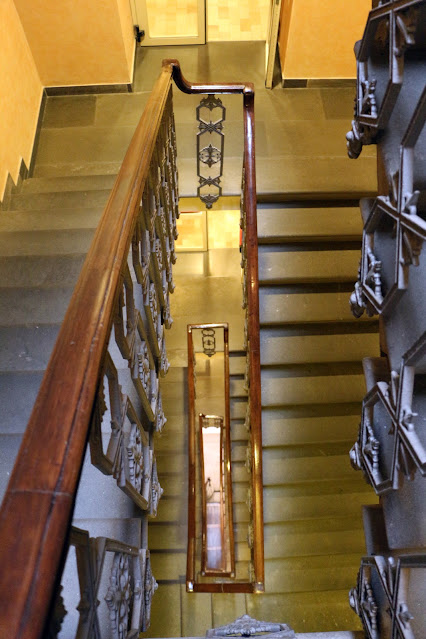






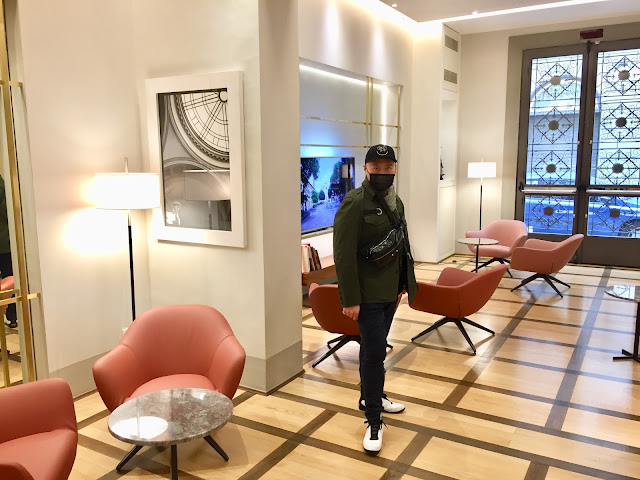




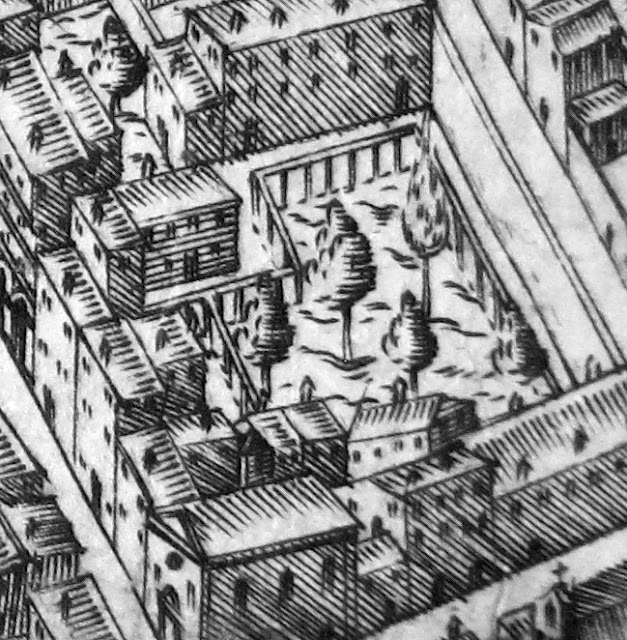




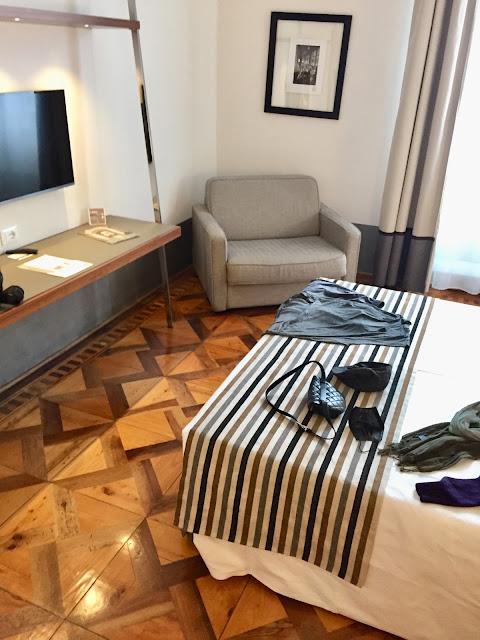




















































































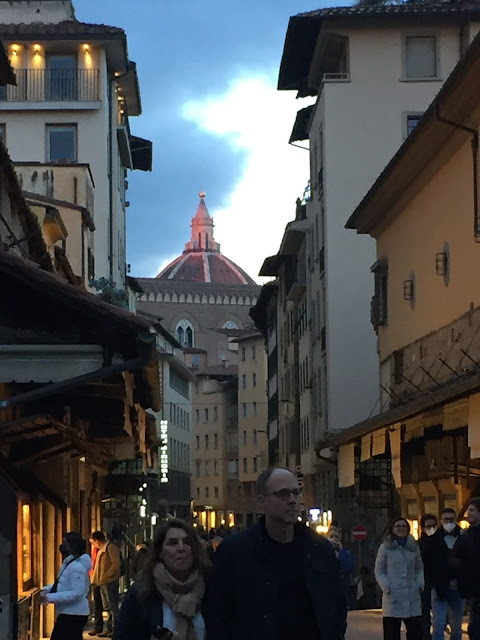


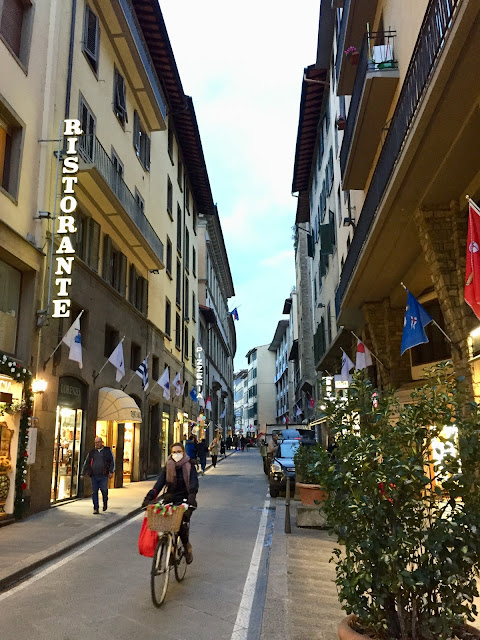




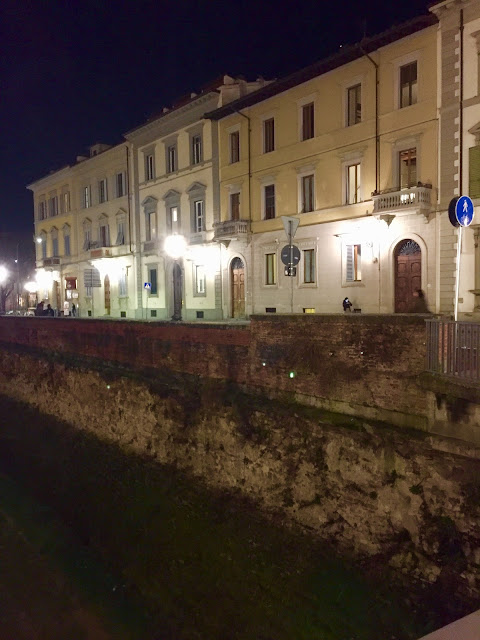
































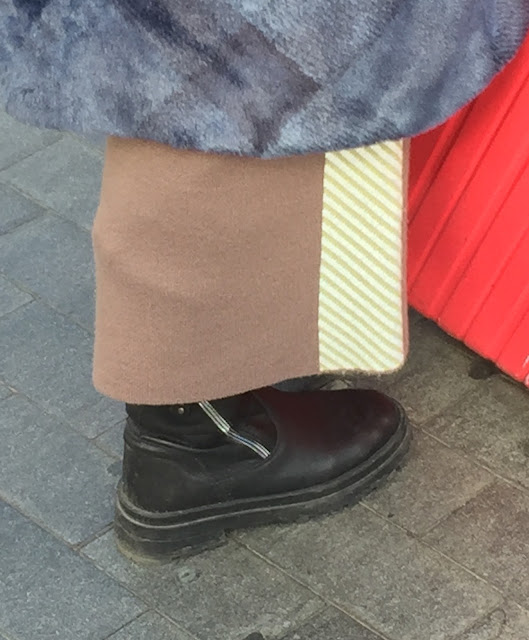



































No comments:
Post a Comment
Don't be shy: leave your comments :)